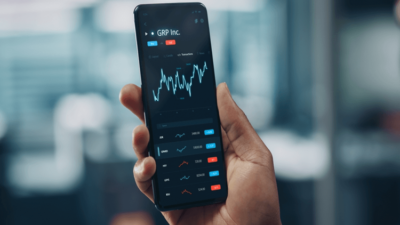There are many cloud-based data visualization tools, which help in data analytics and business intelligence etc. Interpretation strategies by these tools can analyze your raw data and present it in easily understandable graphical formats. You can use these programs to make bar charts, column charts, pie charts, and other pictorial representations of data.
This article will discuss some top data visualization tools, which are handpicked by expert analysts and data engineers. The list is now comprehensive, but it consists of the top non-paid as well-paid options. You may go through the features of each to assess it against your data management needs and choose the most appropriate ones.
Table of Contents
Data visualization tools
1) Power BI
As one of the most powerful and easy to use business intelligence tool, Power BI offers data visualization by converting data from different sources to easy to infer and interactive reports. It offers many software services and connectors. Features of Power BI are:
- Ability to manage reports using SaaS-based solutions.
- Real-time updates to be accessed through the dashboard.
- Secure connection to reliable data sources in both on-premises and cloud databases.
- Explore data stores using natural language querying.
- The dashboard features regular data updates and easy visualization.
- Easy to use in hybrid configurations.
2) Tableau
Tableau is also a very robust database visualization tool, which empowers the databases in a better way. You can connect databases easily with it to create more understandable and easier to interpret visuals. Tableau also enables users to share visualization with others. Major features of Tableau are:
- Moderate to a high speed of processing.
- Options for enhancing and optimizing operational progress.
- Offer extensive options to secure data without the need for scripting.
- Coming in different versions as Tableau for desktop, server, and cloud, etc.
- Can integrate with 250+third-party applications.
- Can handle big data-related tasks too.
3) Adaptive Insights
An advanced data visualization tool that is meant to boost business performance through insightful business decisions. This tool’s features will help turn data into insights and help plan, forecast, budget, and execute business decisions effectively. The major features of the tool are.
- Easily collaborate with other team members and other teams as well.
- Automation of data collection and ensure you always work with fresh data.
- It comes with a comprehensive dashboard that helps to generate reports without any effort.
- Provide adaptive and actionable insights to plan budgeting and execution of a project.
4) Qlik
Qlik is another top data processing and visualization tool, which can effectively convert raw data into insightful knowledge. This software will act similar to that of the human brain by understanding “associations” and can go deeply into various directions, searching for the answers. Top features of Qlik include:
- Support different data presentation formats for enterprise presentations.
- Offer very transparent reporting options.
- High scalability in terms of data integration.
- Maintain data associations automatically.
- Ensure fast integration from different data sources into one application.
- Offer data visualization in an innovative and meaningful way.
- It also helps you to identify the information and trends to make business decisions.
5) Domo
Domo is a wonderful cloud-based platform that will help conduct data analysis and create easy-to-understand visualization. Domo will enable the users to closely examine the most important data by converting it to graphs, pie charts, and other graphics forms. Administrative data also can be simplified using this app. Major features of Domo are:
- Get real-time visualization of data.
- Domo will let you customize the images, text, color, and other features.
- You can also see a visualization of data on any device.
- It will let you set up customized alerts and notifications.
- Automatic monitoring of data correlations and summaries.
- Domo is integrable with any software.
- Dashboard can be personalized according to your business parameters.
6) Dundas BI
It is another enterprise-ready BI platform, which you can easily deploy as your centralized data portal for the organization and integrate instantly to any website. The platform features many easy to use and advanced data management tools to provide better business management insights. Major features of Dundas BI tool are:
- The users can visually prepare and transform the raw data into easily understandable reports.
- Offer various layouts for data presentation.
- One can customize the charts, maps, and data representations in various ways.
- Dundas BI also helps to incorporate the data through very easy to use drag-and-drop features. It can be done by even someone who does not have any programming or database management knowledge.
- Support a variety of statistical formulas, including the most complicated ones.
- Can connect to any device to interact and analyze the data in it.
- A unique API that will let the user enhance the design requirements as they wish.
7) Cluvio
This data visualization platform will enable the users to SQL queries for any database. It will also let you visualize the results in a much better and understandable way. Basic features of Cluvio include:
- On Cluvio, you can easily translate the raw data into various charts and graphs with professional perfection.
- Shared dashboard, which is accessible to all concerned from anywhere.
- Cluvio will let you share the dashboard with other teams and clients.
- Reports can be viewed at the dashboard or can be sent through the mail.
- Options to filter various dashboards based on different data attributes.
- Automatic suggestions for data visualization on charts.
- You can also set SQL alerts and personalized conditionsas you like.
Some other best data visualization tools, which you can add to your enterprise database management suite are Datawrapper, Plotly, RAWgraphs, Highcharts, Visually, Google Charts, Sisense, FusionCharts, TeamMate Analytics, Chartblocks, Ember Charts, Polymaps, Leaflet, Sigmajs, Looker, etc., which you can try out based on your needs.












Comments